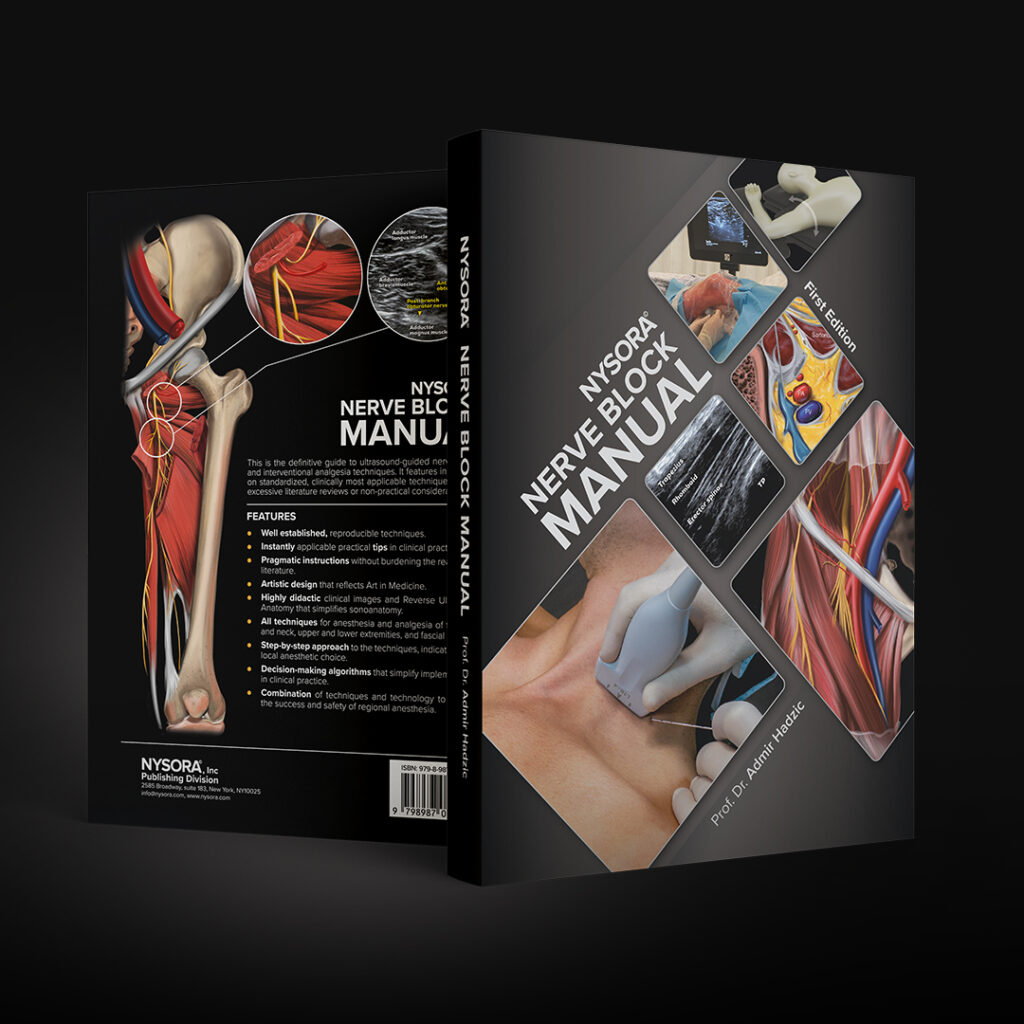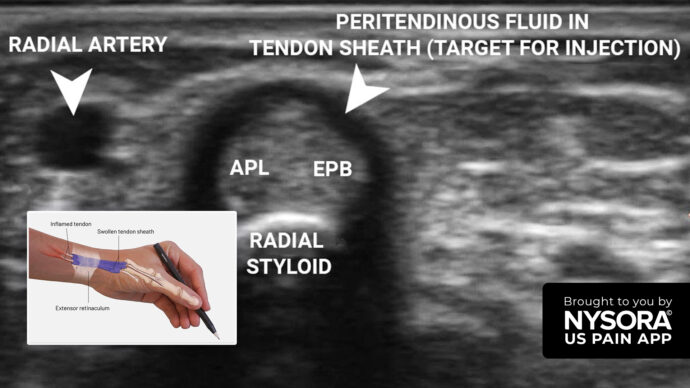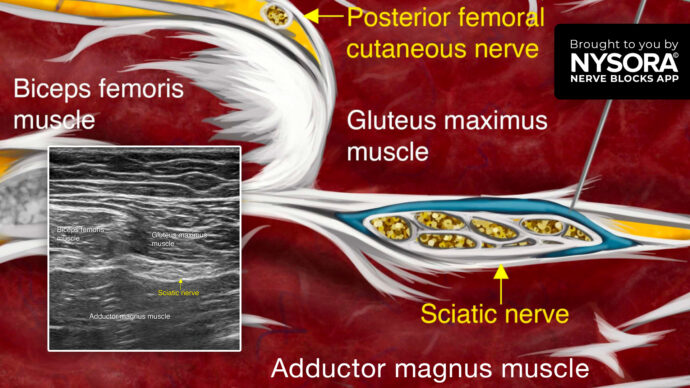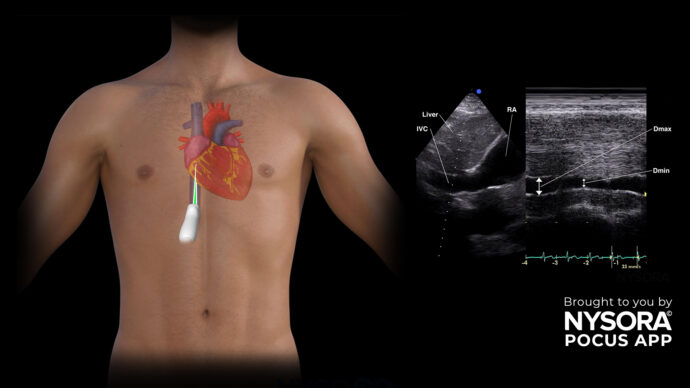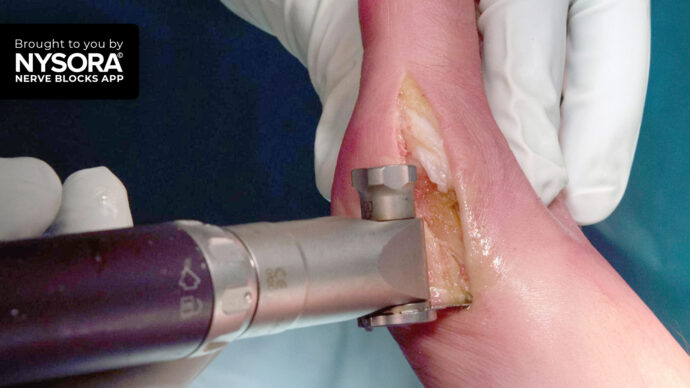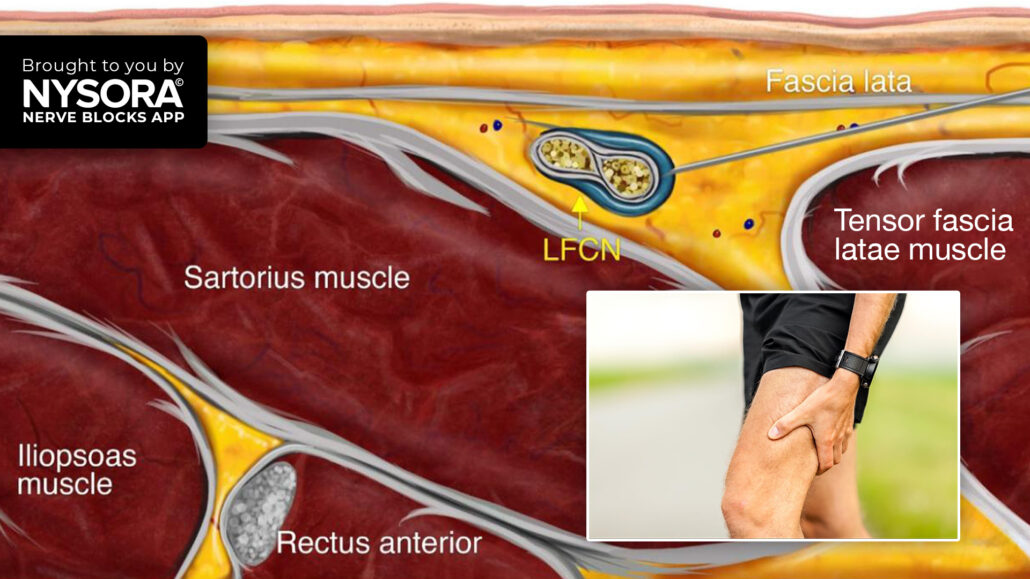
Case study: Meralgia paresthetica
Case presentation
A 46-year-old male patient sought medical attention for burning pain and a tingling sensation in the outer aspect of the right thigh, symptoms typical of meralgia paresthetica, a condition caused by compression of the lateral femoral cutaneous nerve (LFCN). An ultrasound-guided LFCN block was considered to alleviate pain. The diagnosis was confirmed upon physical examination as the patient’s discomfort increased during standing and walking activities. Diagnostic imaging through MRI and ultrasound effectively eliminated other causes of neuropathy.
Nerve block technique
The patient was positioned supine with the lower extremity extended, ensuring optimal access to the proximal thigh for the procedure. The sartorius muscle was identified using a high-frequency linear transducer placed transversely just distal to the anterior superior iliac spine (ASIS). The LFCN appeared as a hyperechoic structure moving superficially to the muscle toward a tiny space between the sartorius and tensor fascia latae muscles.

Transducer position and sonoanatomy for a lateral femoral cutaneous nerve (LFCN) block.
Next, a 25-gauge needle was inserted in-plane deep to the fascia lata next to the nerve to administer the anesthetic solution. The local anesthetic mixture consisted of 5 mL of 0.25% bupivacaine and 1 mL (40 mg) of triamcinolone, effectively targeting the LFCN for pain relief.
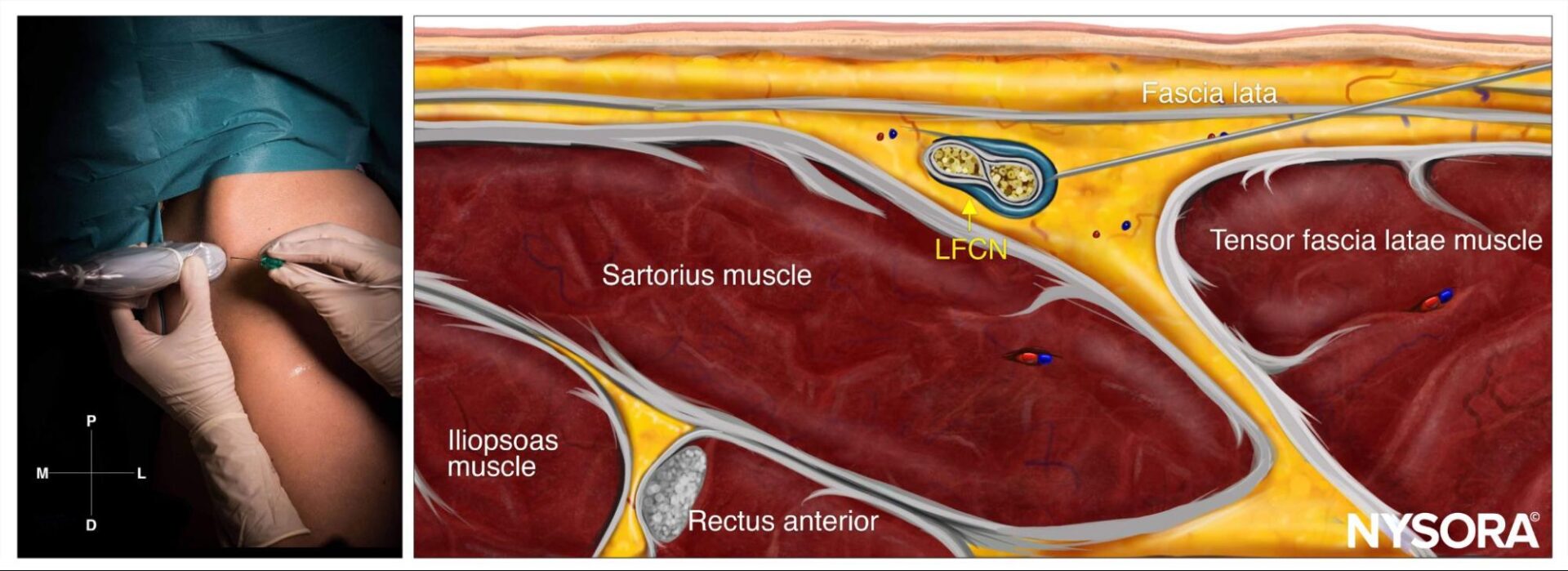
Reverse Ultrasound Anatomy for a lateral femoral cutaneous nerve (LFCN) block with needle insertion in-plane and local anesthetic spread (blue).
Patient outcome
The nerve block was completed without complications, and the patient reported a significant reduction in pain and tingling sensation immediately following the injection. The patient experienced substantial relief from the meralgia paresthetica post-procedure, which improved his quality of life and mobility. The effect of the nerve block lasted for several months.
This case study demonstrates the utility of an ultrasound-guided LFCN block in treating meralgia paresthetica, offering an effective alternative to conservative treatment methods. By providing targeted relief, this approach can significantly improve patient symptoms and quality of life.
Explore additional case studies and access the comprehensive guide to the 60 most common nerve blocks by downloading the Nerve Blocks App HERE. Don’t miss the opportunity to acquire the bestselling NYSORA Nerve Blocks App, now also available in book format – the ideal study companion to complement the app!
